The End of Combustion Vehicles
BY 2011, THE WORLD’S AUTOMOBILE INDUSTRY was enormous, intensely competitive, and asleep. Car manufacturing, inspired by Toyota’s “lean production system,” had become highly efficient and perfectionist but also conservative. Innovations came piecemeal from all over the map—stability control from one company, GPS navigation from another, bluetooth integration from somewhere else. That’s the norm in a mature industry with many players in prolonged close competition. Progress comes in distributed increments rather than concentrated leaps.
But then in 2012, a brash new company introduced a glamorous version of an ancient kind of car, and everything changed. Motor Trend magazine gave the new vehicle their “Car of the Year” award with an unprecedented unanimous vote. Consumer Reports magazine declared it was probably the best car ever built and assigned it their highest rating in history—99 out of 100.1
The car could accelerate from zero to 60 mph in a whiplash 4.2 seconds. It was rated the safest car in history. It seated seven, with luxurious features controlled from a huge touch-screen next to the driver. Its motor was twice as efficient as anything else on the road. And most importantly, its exhaust was free of greenhouse gases because there was no exhaust at all.
The new company was Tesla. The new kind of car, Tesla’s all-electric Model S, was also the oldest kind of car—a battery-driven horseless carriage. Internal combustion engines had so dominated the world for a century that they had contributed to destabilizing Earth’s climate. That was one reason they were about to become history. Tesla’s ambition was to replace fossil-fuel vehicles with something cleaner, and they would do that by building a car that was better than the old petrol burners in nearly every way.
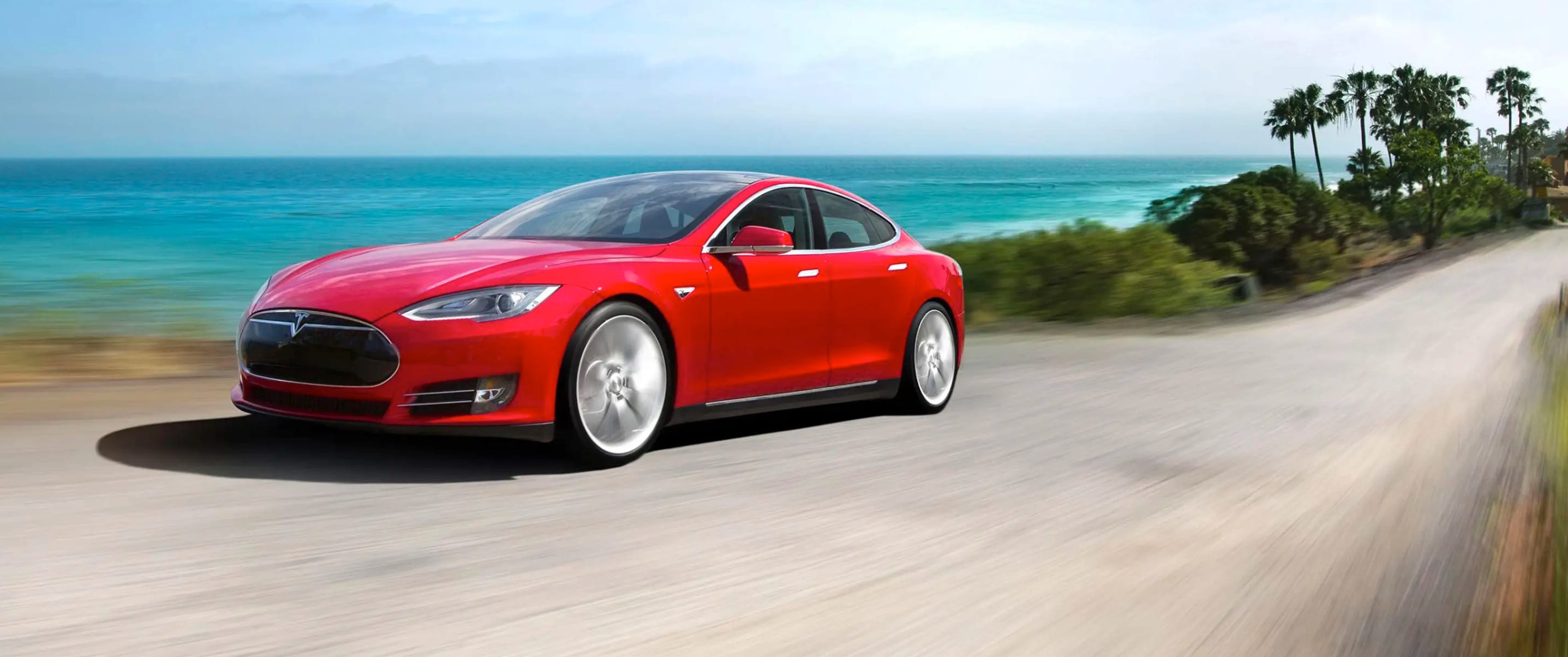
2012. Tesla’s Model S luxury sedan combined panache with a new kind of utility as a mass-marketed all-electric car with dazzling features and surprisingly low maintenance costs.
(I won’t try to write about the ongoing industry-wide shift to electric vehicles because it would be out-of-date almost immediately. All I’m attempting here is to recount the sudden transition that occurred when one company set about converting what people thought of as glorified golf carts into the ultimate in irresistible cool.)
Tesla’s competitors were initially puzzled and then worried by a peculiarity in Tesla’s business model. There were no Tesla dealerships. The cars were sold directly to customers over the Internet. How could Tesla give up the highly profitable stream of revenue that came to car companies from the service centers at their dealerships? Every auto company counted on the fact that when a car needed maintenance or repair, customers nearly always took it to the dealership they bought it from to take advantage of the expert knowledge there and the ready supply of specialized parts.
Analysts began to notice the ways that electric vehicles (known as EVs) were going to be deeply disruptive. In an essay titled “Will Car Dealerships Survive the EV Revolution,” an online billing service called Aria wrote in 2018:
Car dealers today make the biggest chunk of income—44%, according to Forbes—from parts and service. When it comes to EVs, that’s a real problem, because they require very little in the way of traditional auto maintenance. Their electric motors and single-speed drive trains eliminate the need for oil changes, transmission fluid and radiator coolant checks, drive belt and air filter replacements, and many other income-generating services dealerships now take for granted.2Few remembered the similar attractions of the first electric vehicles a century earlier. In terms of the four sources of most problems in machines—moving parts, flowing fluids, flowing electricity, and temperature stresses—electric vehicles are easier to maintain in every respect. The only fluid the customer puts in is for the windshield wipers—no gasoline, no oil to change, and no engine coolant. While a gas engine and drivetrain have some 2,000 moving parts, an electric vehicle’s motor and drivetrain have just twelve moving parts. There’s no starter, no distributor, no carburetor, no spark plugs, no gaskets, no valves, in fact no engine at all; also no fuel pump, no water pump, no hoses, no clutch, no muffler, no exhaust pipe, and no catalytic converter. All the hard-won lore of how to deal with those things was headed toward irrelevance, good only for maintaining antiques.

The motors, drivetrain, and fuel tank of the Tesla Model S in 2023. The two electric motors between the wheels provide 670 horsepower—capable of accelerating the car from a dead stop to 60 miles per hour in 3.1 seconds (a second faster than the original 2012 Model S.) The low-slung battery array gives the car a very low center of gravity and thus exceptionally good handling.
The twelve moving parts of the electric motor and drivetrain provide power to the wheels at 95% efficiency. A combustion engine is lucky to get 30%—meaning that 70% of its energy is wasted as heat, vibration, friction, and noise. The high temperature caused by all that thrashing metal, added to the inherent heat of combustion, increases the wear and tear on all the moving parts, and so an elaborate liquid cooling system and fan is required to keep the system functioning at all. By contrast, the super-efficient electric motor generates so little heat that it can be air-cooled. (The electric car’s battery pack, however, can generate a lot of heat, especially when rapidly charging or discharging. For that reason, most electric cars have their own integral liquid cooling system with a pump and radiator, but the fluid almost never needs replacement.)
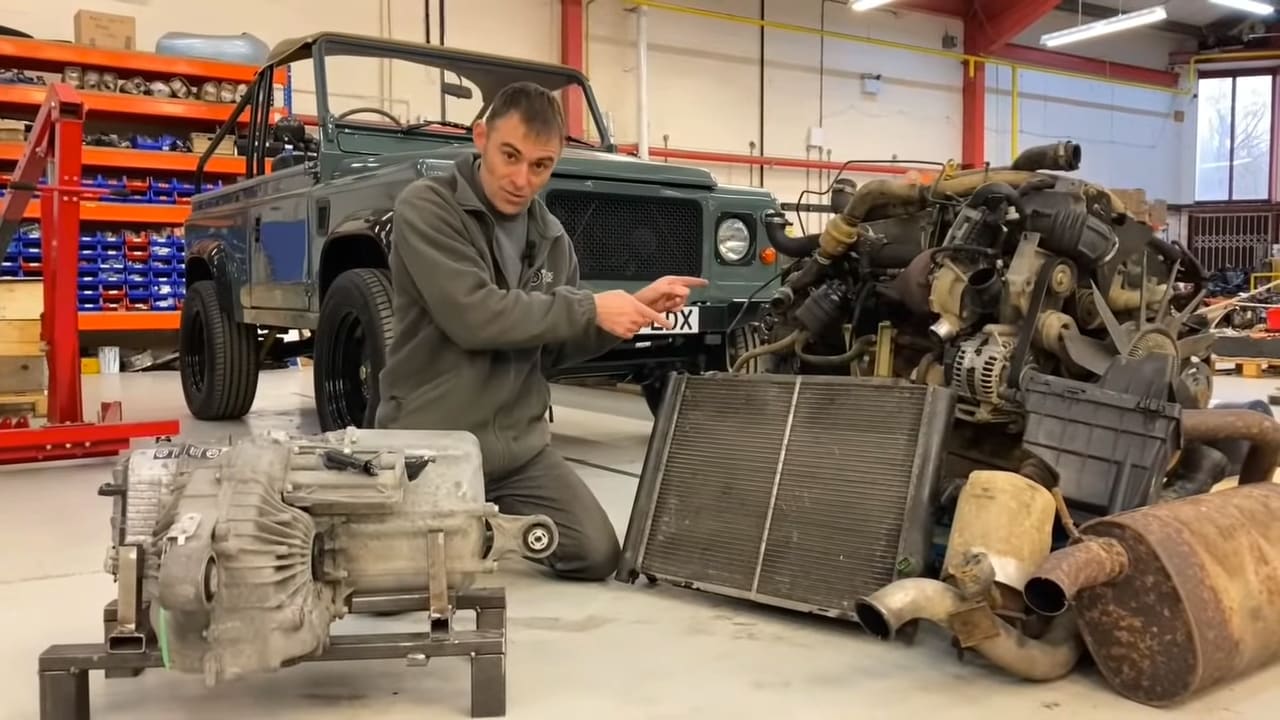
(See text below.)
Comparing a Tesla Model 3’s electric motor on the left to a Land Rover Defender’s standard combustion V8 engine on the right, mechanic Richard Morgan explains how they differ:
“What we have here is a complete drive unit from a Tesla Model S. It’s the equivalent of an engine, a gearbox, and an electronic control unit all in one. Look how small it is—it’s 84 kilos (185 pounds), and it knocks out 330 newton meters of torque. Compare it to this beast from the Land Rover Defender behind me, which also has about 300 newton meters of torque. Just look at the size and complexity of it. With the gearbox and exhaust and all the things that keep it going, you have about 350 kilos of weight (770 pounds). And it’s only 30% efficient at turning energy into motion. The 84-kilo Tesla motor is 95% efficient.” (Source: “Engine vs Electric Motor,” Jan. 23, 2022, Electric Classic Cars channel, YouTube. Richard Morgan converts classic vintage cars—such as a DeLorean or a 1967 Maserati Ghibli—into powerful, better-handling, electric vehicles at his shop in Powys, Wales. He owns a 1972 Volkswagon Beetle with a Tesla motor that accelerates it from 0 to 60 mph in 2.6 seconds.3 His YouTube channel has 138,000 subscribers.)

(See text below)
Richard Morgan:
“Now compare the energy density of petrol versus batteries. This jerrycan of 20 liters of petrol has about 180 kilowatt-hours of energy, and it only weighs 14.8 kilos. That makes 12.2 kilowatt-hours per kilogram. That is very energy-dense. The old lead-acid batteries weigh 16 kilos and have 0.84 kilos of energy, which gives them an energy density of 0.05 kilowatt-hours per kilogram. Compare that to the 12.2 of petrol, and you can see why petrol won over batteries for so long. But today we have lithium-based batteries that have 0.22 kilowatt-hours per kilogram, so you can see why they’re a lot better than the lead-acid batteries of yesteryear. It’s still nowhere near the 12.2 kilowatt-hours per kilogram of petrol, but compare them in use.“What I’ve laid down here is your typical battery size for an electric car—it’s a 58-kilowatt-hour battery pack. My wife’s Tesla Model 3 is about the same. Now, 95% of that is turned into motion, so you get about 55 kilowatt-hours. There are 180 kilowatt-hours of energy in the jerrycan of petrol, but don’t forget that only 30% of that is turned into motion by the petrol engine, so it has 54 kilowatt-hours, and this is a fair comparison. If it was my wife’s Tesla against an equivalent BMW Series 3, they should, in theory, go the same distance down the road.“The batteries weigh 280 kilos (617 pounds), and the petrol weighs 14.8 kilos (32 pounds). That’s the rub with batteries versus petrol. People say that electric vehicles are heavier but only a little bit heavier. My wife’s Tesla is 40 kilos heavier than a BMW Series 3. And consider the weight distribution. It’s great to have weight down really low in a car. My wife’s Tesla handles fantastic.“People who think that electric cars might be impractical always ask, ‘How long does it take to charge up?’ That isn’t the most pertinent of questions to ask, and here’s why. In petrol world, we’re all used to filling up en route. But electric car ownership is completely different. You’re setting off usually with a full tank of electrons from home because that’s where 95% of charging is done—from home. A few percent of charging is done at your destination. Very little charging is actually done en route. When people ask me, ‘How long does it take to charge up?’, I say, “Two seconds.” As soon as I get out of my car, I plug it in, and I go in the house and get on with the rest of my life. A car is just sitting there, parked up, 99% of the time. You may as well get it to do some work while it’s sitting there.” (Source: “Petrol vs. Batteries,” Jan. 31, 2022, and “Electric Car Charging,” Feb. 12, 2022, Electric Classic Cars channel, YouTube.) One lauded feature of Tesla cars is the way the brake calipers are saved from wearing down because the “regenerative braking” that feeds power back into the batteries does most of the slowing. (But roads that are salted for winter driving override that feature. Teslas in those areas are required to have their brake calipers lubricated every year or 12,500 miles.) Windshield wipers are usually replaced at the same rate and cost as non-electric vehicles. Tires, however, may need to be swapped out more often because of the extra wear from battery weight and the high-torque acceleration. The amount of fuel cost reduction depends on local prices of electricity and gas; generally, the cost of fuel from a plug is about half the cost of fuel from a pump.16
Analysis by Consumer Reports in 2022 declared that “EV owners could save between $1,800 and $2,600 in operating and maintenance costs for every 15,000 miles they drive…, compared to drivers of gas-powered vehicles.”4
The most startling thing for early Tesla owners—I was one of them—was the way new features and improvements for the car would show up overnight via its connection with the Internet. Some were software fixes. One day, my automatic windows wouldn’t close properly. News of that problem must have been noticed and fixed by Tesla-in-the-sky because the windows worked fine the next day. Software upgrades for owners were frequent and often dramatic. Unexpectedly one morning, your car would have more power, or faster charging, or greater range, or better traction on hills, or a feature that would vibrate the steering wheel when you cross a lane divider on the highway. There were luxuries like “Dog Mode”—which keeps the parked Tesla at a comfortable temperature for your pet and displays a message on the video console readable by passersby: “My owner will be back soon. Don’t worry,” along with a readout of the temperature in the car.
Conveniently, the new features come with matching updates in the digital onboard manual. There are no printed Tesla manuals. On Tesla’s website for my car, the “Do It Yourself” maintenance instructions include a sound catalog of the various signaling sounds the car makes (such as the chime that tells you Autosteer is enabled) as well as all the car’s mysterious normal operating sounds (such as the clunks and thumps that occur during supercharging due to temperature changes in the battery system).
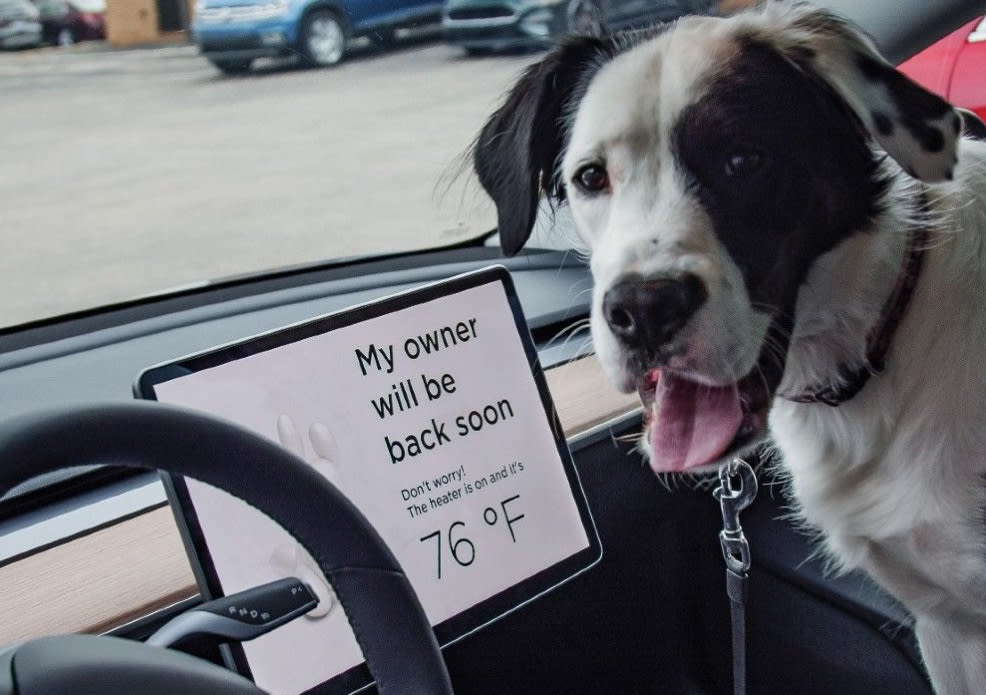
“Dog Mode” is one of Tesla’s many features that arrive magically as software upgrades via the Internet. The car improves while you own it, at no extra cost.
Digression 5 - ELON MUSK
Walter Isaacson’s 2023 biography of Elon Musk is worth reading. Much of its quality comes from Isaacson shadowing Musk in person for all of his subject's pivotal events during 2021 and 2022. By the end of that period, Musk was CEO of six companies—Tesla, SpaceX/Starlink, The Boring Company, Neuralink, X.AI, and “X” (formerly Twitter).
Musk’s innovations at the leading edges of software design and artificial intelligence are rivaled by other companies, but when it comes to designing and manufacturing hardware, he has unique mastery. His cars, batteries, solar gear, rockets, and satellites have all proven to be game-changers in part because they combine ingenious design with surprisingly low cost.
His hardware companies range from successful to extremely successful financially because of his foundational altering of manufacturing practice. He requires that his design engineers do their work next to the people and machines fabricating the car, battery array, rocket, or other device. In a ferocious cycle of iterations, they design and redesign the device and its manufacture simultaneously.
The ferocity of the iteration cycle comes from what Musk calls “The Algorithm.” Isaacson quotes his five commandments to the design teams:
1. Question every "requirement." Each should come with the name of the person who required it….2. Delete any part or process you can. You may have to add them back later. In fact, if you do not end up adding back at least 10% of them, then you didn't delete enough.3. Simplify and optimize. This should come after step two. A common mistake is to simplify and optimize a part or a process that should not exist.4. Accelerate cycle time. Every process can be speeded up. But only do this after you have followed the first three steps. In the Tesla factory, I mistakenly spent a lot of time accelerating processes that I later realized should have been deleted.5. Automate. That comes last. The big mistake in Nevada and at Fremont was that I began by trying to automate every step. We should have waited until all the requirements had been questioned, parts and processes deleted, and the bugs were shaken out.5By 2023, Tesla had, with its Model Y, the world’s best-selling car of any kind. Priced at $40,000, it outsold even the $22,000 Toyota Corolla. Meanwhile, SpaceX’s reusable rockets were so efficiently manufactured that by 2022, according to Isaacson, the company was launching “twice as much mass into orbit as all the other companies and countries combined.” SpaceX rockets, such as the “absurdly low-cost”6 Falcon Heavy, had lowered the cost of getting payload to orbit to one-tenth of what it had been just ten years before.7
Isaacson’s Musk biography was published at the same time as a surprisingly parallel biography by Michael Lewis of Sam Bankman-Fried, titled Going Infinite. Both are skilled accounts, based partly on direct observation, of brilliant billionaires totally dedicated to saving the world. Bankman-Fried, inspired by the “earn to give” strategy that was part of the “effective altruism” movement, accumulated $26 billion in three years by building a cryptocurrency exchange named FTX. The “giving” part of his scheme was relatively thin—$130 million to Effective-Altruism-approved charities, $70 million to US political campaigns—before FTX collapsed in November 2022 and he was arrested--charged with fraud.
Through Tesla and SpaceX, Musk initiated and directly led a new, accelerated regime in climate-friendly electric vehicles and a new, accelerated regime in providing access to Earth orbit. With the success of those projects, Musk may have done more practical world-saving than any other business leader of his time. Bankman-Fried couldn’t even save himself from prison.
In Isaacson’s book, there’s a choice encounter between Musk and another noted world-saver, Bill Gates, founding CEO of Microsoft and prodigious philanthropist. In early 2022, they met in Austin, Texas, to discuss philanthropy, particularly in relation to climate change. Musk declared that Gates would do the most good for climate by investing in Tesla. He then berated Gates for having made a huge investment in shorting Tesla stock—betting that its price would go down—and thereby devaluing the stock in the market. Gates apologized. At which point, “Elon was super-mean to me,” Gates later told Isaacson.
When Isaacson asked Bill Gates why he had shorted Tesla stock,
he explained that he had calculated that the supply of electric cars would get ahead of demand, causing prices to fall. I nodded but still had the same question: Why had he shorted the stock? Gates looked at me as if I had not understood what he had just explained and then replied as if the answer was obvious: he thought that by shorting Tesla he could make money.8(As it turned out, Gates lost $1.5 billion in the deal. Tesla stock kept going up.)
“Earn to give” as a strategy for doing good has a way of scrambling the giver’s incentives.
(End of ELON MUSK digression)
Electric cars did have to sacrifice a few things. So much weight is in their batteries that the rest of the vehicle has to be made as light as possible to retain reasonable range and mileage, and that leads to some maintenance issues. Spare tires add a lot of weight and are seldom used, so they are left out of many electric cars.. Tesla owners never change a tire anymore. When you get a flat, you call Tesla’s road service, they come and replace the flat with a temporary spare, and you take the tire to a Tesla service center for repair or replacement. It’s a nuisance. (Tesla did eventually have to create dealership service centers. By 2023, when they had four million cars on the road, their earnings report declared, "Body shop & part sales are core drivers of profit growth.")
More serious is the matter of damage to the car’s body. To save weight, the frame and skin of a Tesla are made of aluminum. It is much lighter than steel, but unlike steel, “aluminum has no memory,” as they say. Rather than bouncing back from light impact, it crumples and stays crumpled. Replacing body parts on a Tesla typically costs tens of thousands of dollars, and it can take weeks.
After some wrangling with right-to-repair advocates and laws, Tesla decided to provide a free subscription service for all of its hardware information plus access to its extensive diagnostic software for $3,000 a year. In 2014, Musk declared that all of Tesla’s patents would be open-source. He wrote:
Tesla Motors was created to accelerate the advent of sustainable transport…. We believe that Tesla, other companies making electric cars, and the world would all benefit from a common, rapidly-evolving technology platform…. Tesla will not initiate patent lawsuits against anyone who, in good faith, wants to use our technology9.Since they were starting from scratch as an all-electric automobile manufacturer, Tesla had the advantage of clarity of purpose. The company was making only one kind of car, and it was so radically different from combustion cars that Tesla was free to rethink everything from the ground up. With fewer parts, the car was simpler to manufacture. Its hardware and software could be tightly integrated, making it easy to continuously upgrade the software for the owner.
There was also the advantage of conferring an approved public benefit. US federal and state governments, eager to reduce fossil-fuel use, stepped in with substantial loans and tax credits. In 2010, as part of a Department of Energy stimulus package, Tesla got a vital $465 million loan. As soon as the company showed a profit in 2013, the loan and interest were paid off ahead of schedule. The company’s stunning success, combined with government pressure on all auto companies to replace dirty fuels with clean electricity, forced the entire industry into a new era. Just a decade after Tesla’s introduction, every major auto company in the world was either offering an all-electric model or publicizing plans to do so.
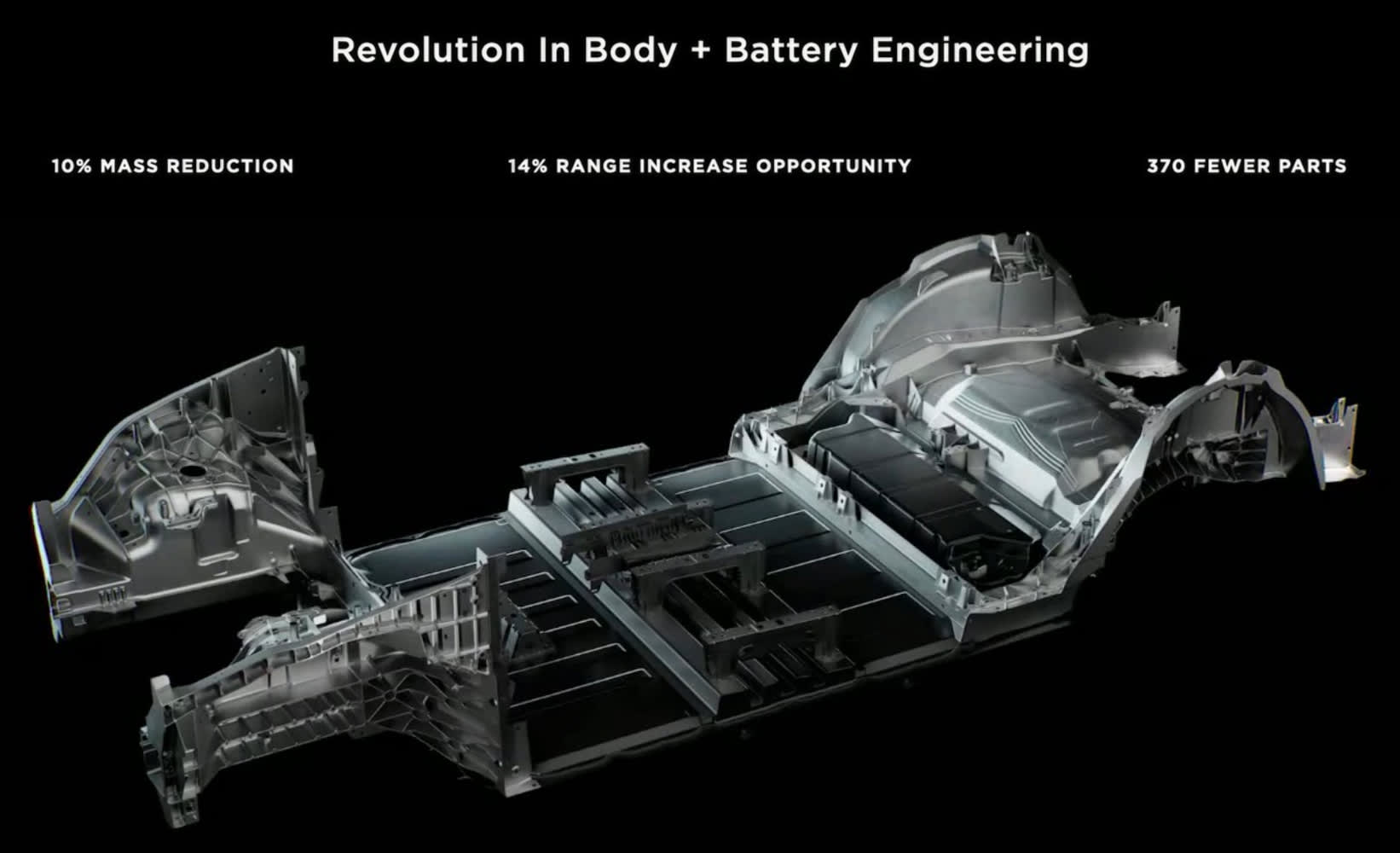
In 2021, Tesla introduced megacasting as a way to fabricate the whole underbody of the Model Y in just two pieces. Walter Isaacson describes the process: “The machines inject bursts of molten aluminum into a cold casting mold, which can spit out in just eighty seconds an entire chassis that used to contain more than a hundred parts that had to be welded, riveted, or bonded together. The old process produced gaps, rattles, and leaks. ‘So it went from a horrible nightmare to something that is crazy cheap and easy and fast,”’ Musk says.”
The industry at large was increasingly following Tesla-created practices. In 2023, Tesla’s charging port standard was adopted by its leading competitors, Ford and General Motors, followed by Audi, BMW, Hyundai, Kia, Porsche, Rivian, Volkswagen, Volvo, Nissan, Toyota, Honda, Mercedes-Benz, Jaguar, Mini, and Rolls-Royce, and their cars were welcomed at Tesla’s thousands of supercharging stations. When Musk challenged his engineers to develop a way to “single-piece megacast” most of the underbody of their cars, the giant presses to do it were developed, and in 2021 Tesla began applying the technique in all their factories. Megacasting had so many advantages that six automakers in China and Volvo in Europe immediately copied the practice.
Along the way, just as it did for Henry Ford, manufacturing a desirable new kind of car made Elon Musk the richest man in the world.
The world is still waiting, however, for an all-electric equivalent of the Model T or Volkswagen bug—something dirt cheap, brilliantly simple and durable, that invites embellishment and repair by the owner.
__________________________
Before Tesla revolutionized automobiles, other consumer products began switching to battery power—even chainsaws and leaf-blowers. The most rapid transitions came with every form of two-wheeled vehicle--bicycles, motorcycles, motor scooters, and stand-up scooters (also known as kick-scooters). Back when bicycles preceded automobiles on the world’s roads, one early proposal, in 1897, was for an electric bike. It failed back then, but in the 2000s, thanks to far more efficient batteries, e-bikes, and other two-wheelers took off, especially in the densely inhabited cities of Asia.
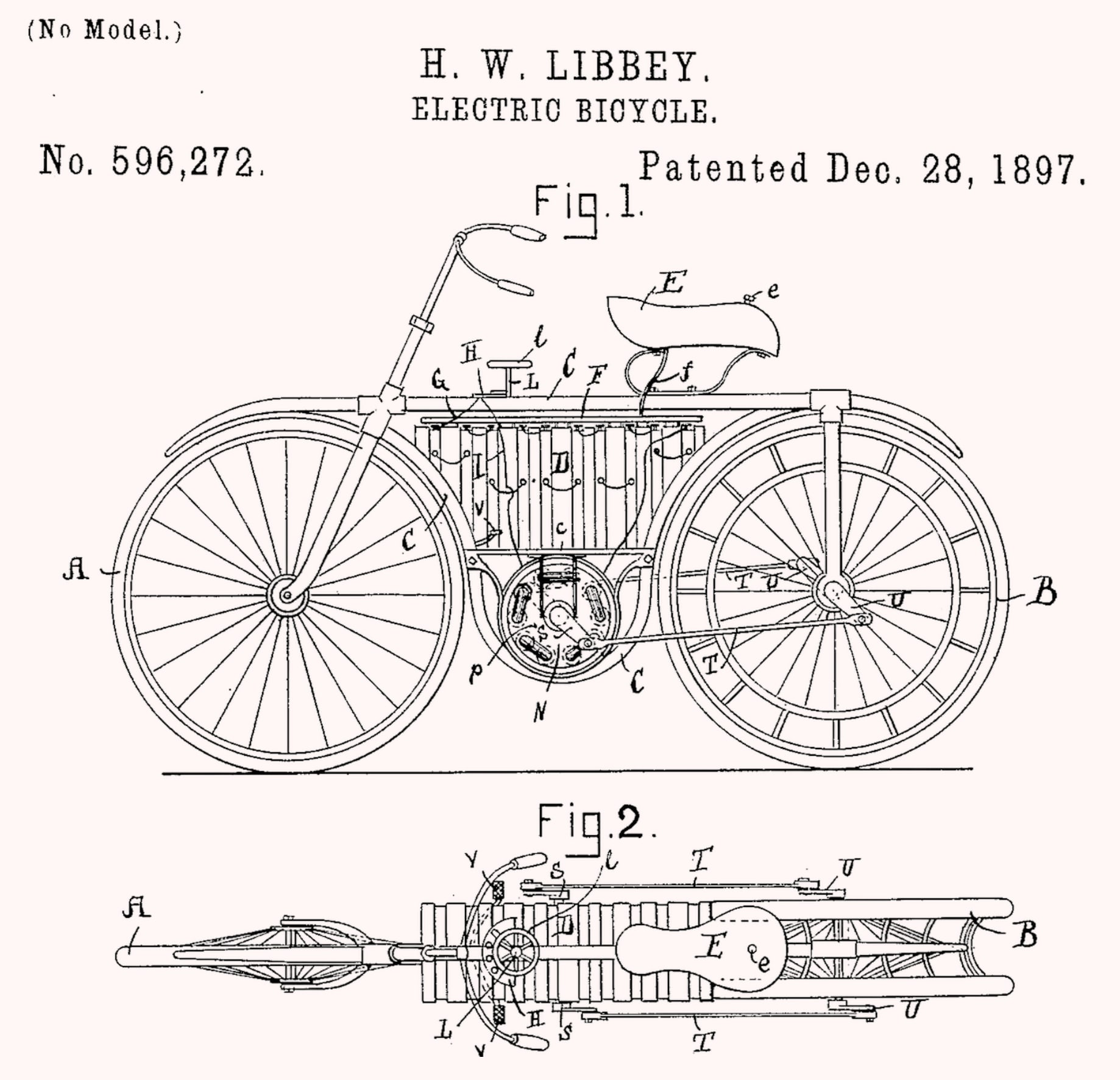
H.W.Libbey’s 1897 patent for an electric bicycle declared that “The batteries are supplied with the exciting fluid, such as diluted sulfuric acid, from a tank, reservoir, or hollow seat E, of saddle form, said fluid being conducted to the tube F, supplying the batteries by a flexible tube f. A small nozzle e is fitted at the rear of the seat, through which the tank or reservoir is filled with the exciting fluid.” The battery had two independent sides, and “Thus only one half of said battery may be used on level roads and both halves employed when climbing a hill, and by employing the rear double-treaded wheel for the driving-wheel a double amount of traction is obtained.”
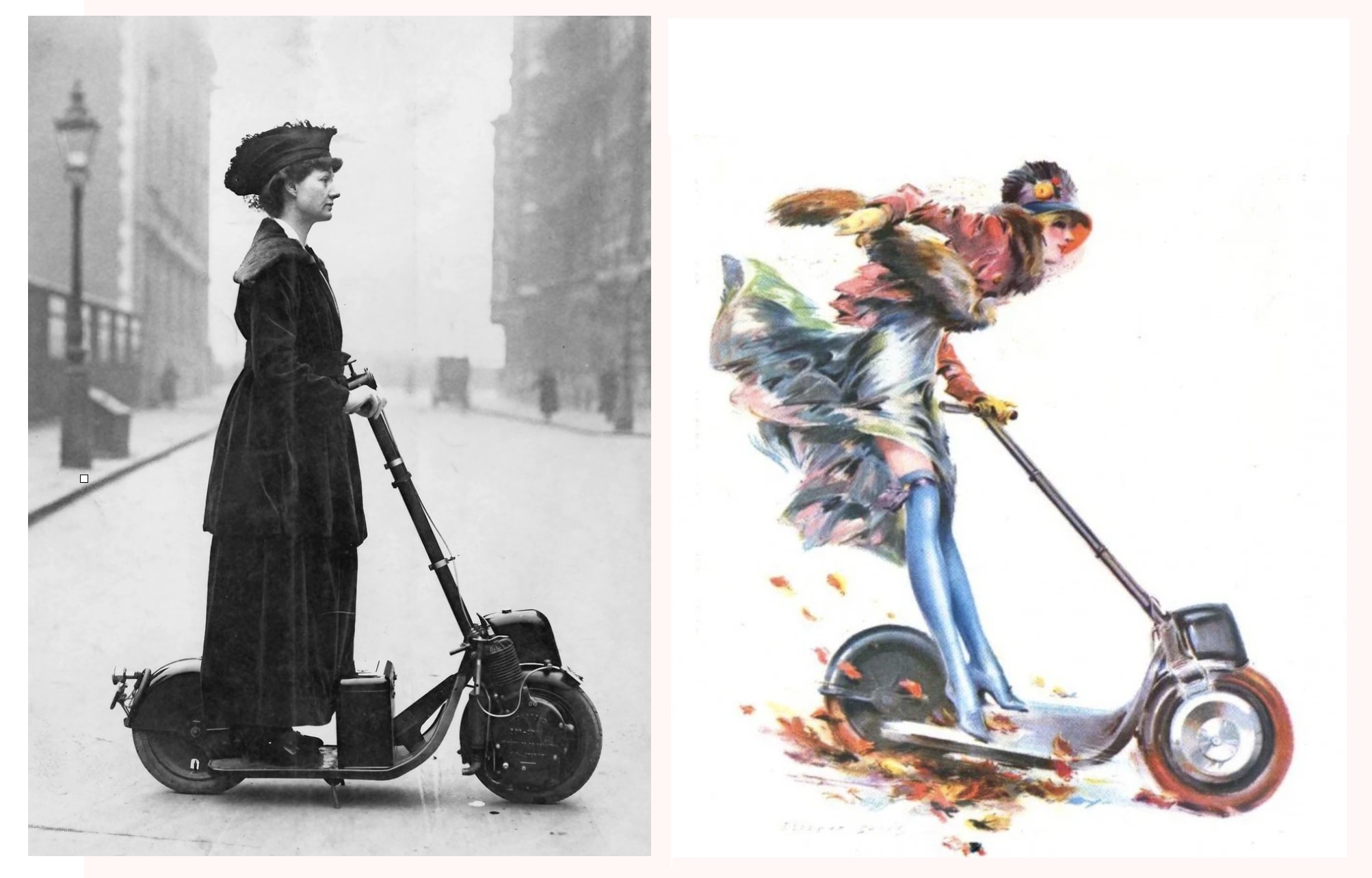
1916. The Autoped—in London (left) and New York (right)—was a motorized stand-up scooter. There was an electric version, but most had a tiny 1.5-horsepower gas engine. Lady Priscilla Norman, an activist and suffragette, used her Autoped to get to her office in downtown London. New York’s Puck magazine ran an ad titled “Look out for the Autoped girl!” with this illustration by Everett Shinn. Autopeds were manufactured from 1915 to 1922
China led the way with electric two-wheelers, thanks to a convergence of government fiat and entrepreneurial zest. By 2010 the country had 100 million e-bikes in use—four times the number of automobiles—and the government built an extensive infrastructure of charging facilities. The general manager of a leading manufacturer told Time magazine, “Motorcycles are too dangerous, cars are too expensive, public transportation is too crowded, and pedal bikes leave you too tired. So people buy e-bikes."10 Chinese cities have abundant bike lanes, and the bikes can be charged overnight with an ordinary household plug. By 2020, there were well over 200 million e-bikes in China and 51,600 e-bike manufacturers, many of them exporting to the growing world market. India and Vietnam became massive early adopters, followed by the rest of Asia and much of Africa.

Taiwan has 23 million people and 14 million motor scooters.
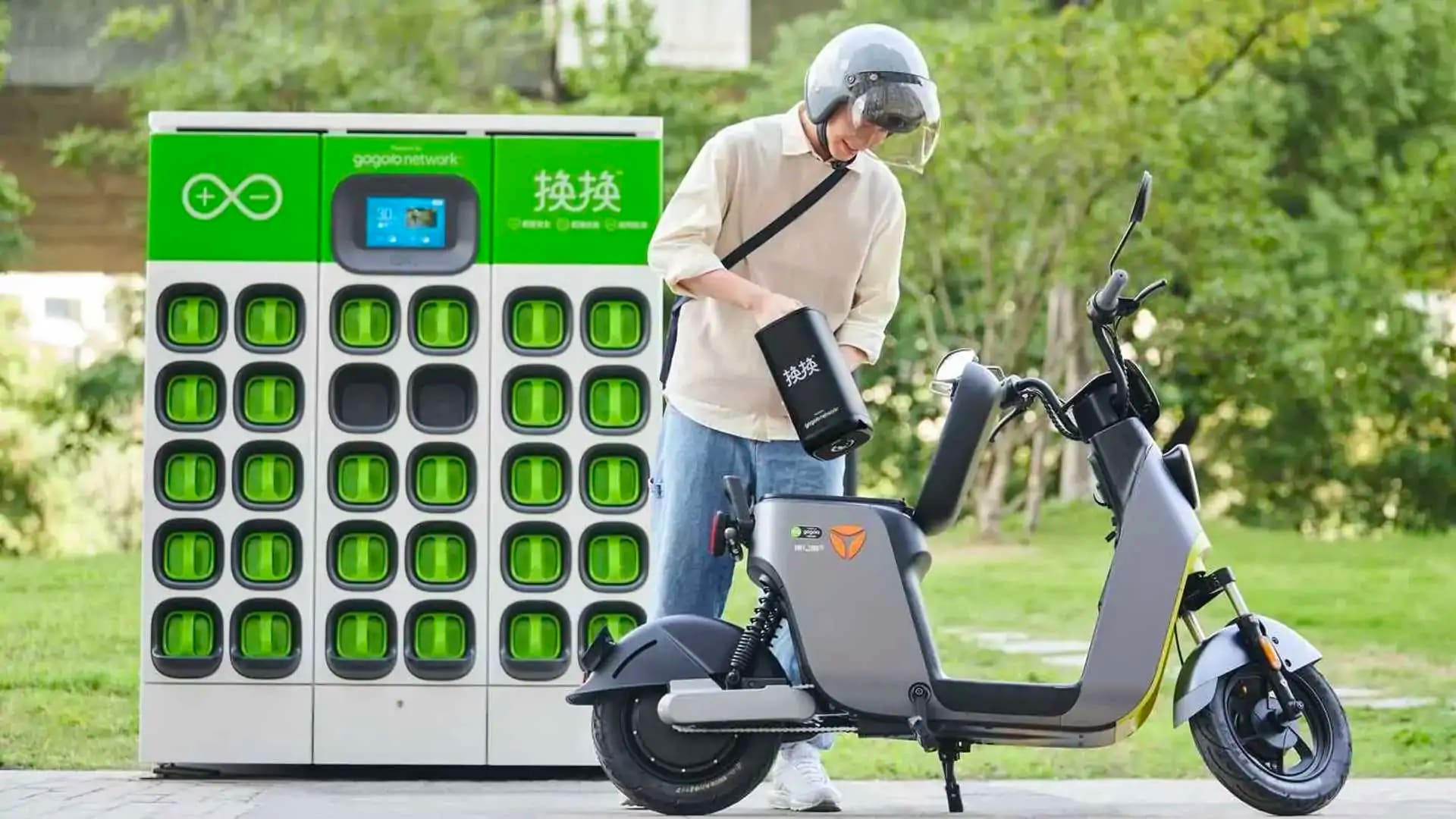
In Taiwan, 2,500 Gogoro battery-swapping stations serve 90 percent of the 1.5 million electric scooters in the country.
A problem for electric vehicles from the very beginning was the time it takes to recharge your batteries while traveling. One solution was battery-swapping stations, but they never worked for electric cars and still don’t. With two-wheeled electric vehicles, however, it may be a different story. Taiwan pioneered battery-swapping networks for scooters and motorcycles with the company Gogoro, which quickly developed partnerships and networks in China, India, Indonesia, Singapore, and the Philippines—and also Israel, France, and Germany. A monthly subscription gets the customer access to unlimited fresh batteries.
Electric two-wheelers took off in the developing world much as cell phones did and for the same reasons—low-cost personal empowerment that can be home-brewed.

Meanwhile in America, here comes the Harley-Davidson "LiveWire ONE” electric motorcycle. There’s no violent kickstart; you just turn it on. The engine roar is gone, and so is the intricate dance of throttle-and-gearshift to accelerate. In complete silence, a simple twist of the wrist takes the 500-pound bike and you from zero to 60 miles per hour in 3.1 seconds. Reviewers use words like “addictive sheer exhilaration” to describe the ride. The range on a charge is about 140 miles in town. The price is $20,000 (with tax rebates).
If electrics replace combustion-powered motorcycles, does that mean that the motorcycle maintenance books that began this chapter are about to be obsolete? In some ways, yes. The practice of prying off “shit-colored chunks of bike cheese” to track down an oil leak will be a yarn from yesteryear. But the wisdom in the books—“gumption traps” and such—will hold their value. And motorcycle worship—“Live to ride!”—is likely to continue. You still wrap your delicate body around heavy, unstable, high-velocity propulsion.
At every speed on every kind of electric two-wheeled vehicle, the sweetest thing about the ride is the quiet–both for the rider and for everybody nearby. It’s another reason for cities to find ways to encourage two-wheeled traffic.
Cities with good mass transit and bike lanes have a distinct advantage because the electric mini-vehicles foster new ease with what city planners call “micromobility.” Folding stand-up scooters and some e-bikes can be carried on mass transit or picked up at public scooter-share and bike-share spots near the transit stations. The properties of electric two-wheelers enhance the ambiance of urban life. Everyone on the street can see and hear each other. You can stroll on foot, zip on wheels, or sit and watch the show.
With the rumble and rattle of combustion traffic gone, the town feels more congenial, and the air is better.
___________________
Postscript 1 - Unreliability Incorporated
In the 1950s, Britain was the world’s second-largest manufacturer of cars after the US, boasting renowned marques such as Rolls Royce, Mini, Jaguar, Land Rover, MG, and Bentley. All that went away in the next forty years because the British automotive industry lost its version of The Maintenance Race to Japan, Germany, and the US.
Cars made in England acquired a fatal reputation for unreliability. Rainwater leaked in and oil leaked out. They were noisy, they rusted, they wouldn’t start in cold weather, the heaters were feeble, the bearings wore out, and the paint wore off. The electrical wiring was so flukey that the provider, Lucas Industries, was universally known as “the prince of darkness” and inspired a genre of jokes and stories such as:
“Lucas is the patent holder for the short circuit.” “Lucas is an acronym for Loose Unsoldered Connections and Splices.” “Lucas - inventor of the self-dimming headlamp.” “The Lucas motto: ‘Get home before dark.’”11
And there’s this report:
“I have firsthand experience with Mr. Lucas’ legendary vintage British electrical products, due to a disastrous but fairly typical experience with a 1970 Triumph GT6+ I bought after high school and owned from 1976–78. The car was a rolling Lucas joke (that is, when it was capable of rolling). I was particularly fond of the wipers that quit working in the rain and the headlights that magically shut off at night. It was so bad that it cured me of British cars for 37 years.”12Among the many theories of what went wrong (the damn unions, the damn government, the oblivious engineers) is one from Brian Eno, the British musician and composer, that focuses on management. He wrote me that his wife bought a used Aston Martin that, once she tired of having it repaired, wound up as a “beautiful ornament to have in the drive, but not a practical proposition for transport.” He added:
My feeling is that one reason for this was that there was a complete absence of communication between management and workers. Totally different from Germany, where there are always workers’ representatives on the board, and Japan, where there are streamlined ways for workers’ observations and comments to reach management. People who own car companies in England come straight out of the public (i.e. private) school system and have never had, or sought, any contact with the people who work for them.Whatever the cause, manufacturers who make products deemed unmaintainable are ripe for takeover. Rolls Royce and Mini were bought by BMW in Germany, MG by SAIC in China, Jaguar and Land Rover by Tata in India, and Bentley by Volkswagen in Germany. All of them recovered under their new ownership.
What Rolls-Royce did with its reputation for opulence is interesting. It now specializes in crafting individually storied cars—each one extravagantly bespoke to whatever the buyer fancies amid a near-infinity of expensive options, added on to the base price of $460,000 for the sedan, $650,000 for the Phantom Platino. Every Rolls has an umbrella hidden in the driver’s door. Every Rolls has 330 pounds of acoustic insulation and double-layer windows to shut out exterior noise. Every Rolls flaunts the “Spirit of Ecstasy” hood ornament (which disappears into the hood when you park) and “self-righting” wheel centers to make sure the RR logo on all four wheels stays upright and readable.
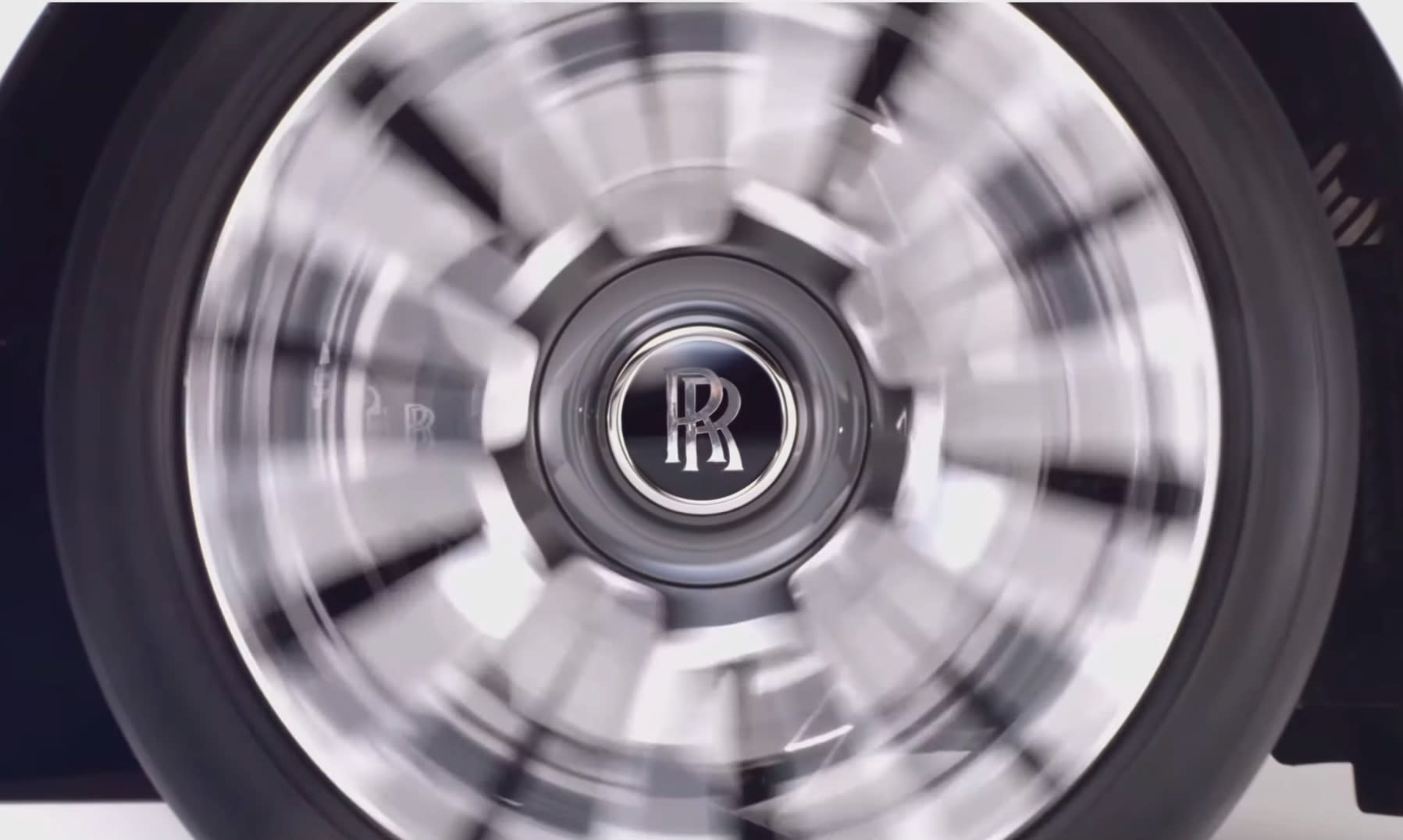
The self-leveling center-wheel cap is among the expensive functionless frills on a Rolls Royce. It doesn’t move when the wheel turns because the logo disk floats on bearings and is bottom-weighted. A transparent shield prevents anyone from turning it by hand when the car is parked.
Options are the main attraction. No other Rolls will look like yours. The palette that you select from 44,000 available colors is registered uniquely to you and named by you. The dashboard art can be whatever you desire; one owner wanted a gold-plated, 3D-printed, stainless steel replica of his DNA profile. And so on through a wealth of luxurious options in leathers, upholstery, wood trim, detailing, entertainment devices, food and drink service, and communications gear. Each car takes three to six months to build and embellish to your specifications. In the old days, the whole vehicle was hand-crafted by mechanics. These days, fifty specialists hand-craft the amenities.
In 2022, 6,021 such vehicles were sold. Thanks to German ownership, maintenance of the whole machine and all that fussiness is also bespoke. To quote the authoritative Kelley Blue Book:
All modern Rolls-Royce vehicles incorporate parent company BMW’s Condition Based Servicing System which uses sensors and algorithms to determine when the car’s oil lifespan has been reached. It also tracks other vehicle parameters, such as brake pads, fluids, and more, to keep you ahead of the curve as far as Rolls-Royce vehicle maintenance is concerned. Using Rolls-Royce TeleService, data will be transmitted to Rolls-Royce, and your local dealership will call to arrange an appointment.13The downside is that Rolls-Royce charges heart-attack prices to fix your car once the four-year warranty runs out. You might be better off leasing instead of purchasing, or you could follow the advice of some experienced owners and take your Rolls that needs work to a BMW dealer first. Many of the parts are now BMW-standard and can be replaced at BMW rates.
Way back in 1900, Charles Rolls reportedly said, “The electric car is perfectly noiseless and clean. There is no smell or vibration. They should become very useful when fixed charging stations can be arranged.”14
Apparently that has now happened. One hundred and twenty-three years later, the all-electric “Rolls-Royce Spectre” can be yours for $420,000. It is said to “drive sublimely.” For over half of the buyers, it is their second or third Rolls-Royce.
___________________

Postscript 2 - First Vehicle
For six thousand years before 1900, humanity’s primary land vehicle was the horse. It ran on one horsepower—multiples of which became the measure of power in all the motorized vehicles that replaced horses after 1900. City dwellers rejoiced to have their streets free of dung and no longer hazardous from runaway half-ton animals, but something was lost.
Maintaining a horse is different from maintaining a car or a bicycle. A horse is no small project, what with tending to its stall, its paddock, the hay and grain, the water, the tack, the training, the grooming, the farrier, the vet. All of that is a form of caring, a relationship with another sentience. A philosopher once wrote:
You cannot remain unmoved by the gentleness and conformation of a well-bred and well-trained horse -- more than a thousand pounds of big-boned, well-muscled animal, slick of coat and sweet of smell, obedient and mannerly, and yet forever a menace with its innocent power and ineradicable inclination to seek refuge in flight, and always a burden with its need to be fed, wormed, and shod, with its liability to cuts and infections, to laming and heaves. But when it greets you with a nicker, nuzzles your chest, and regards you with a large and liquid eye, the question of where you want to be and what you want to do has been answered.15I wonder if that might come again some day—a vehicle that cares back.
______________________________
(End of Chapter 2)